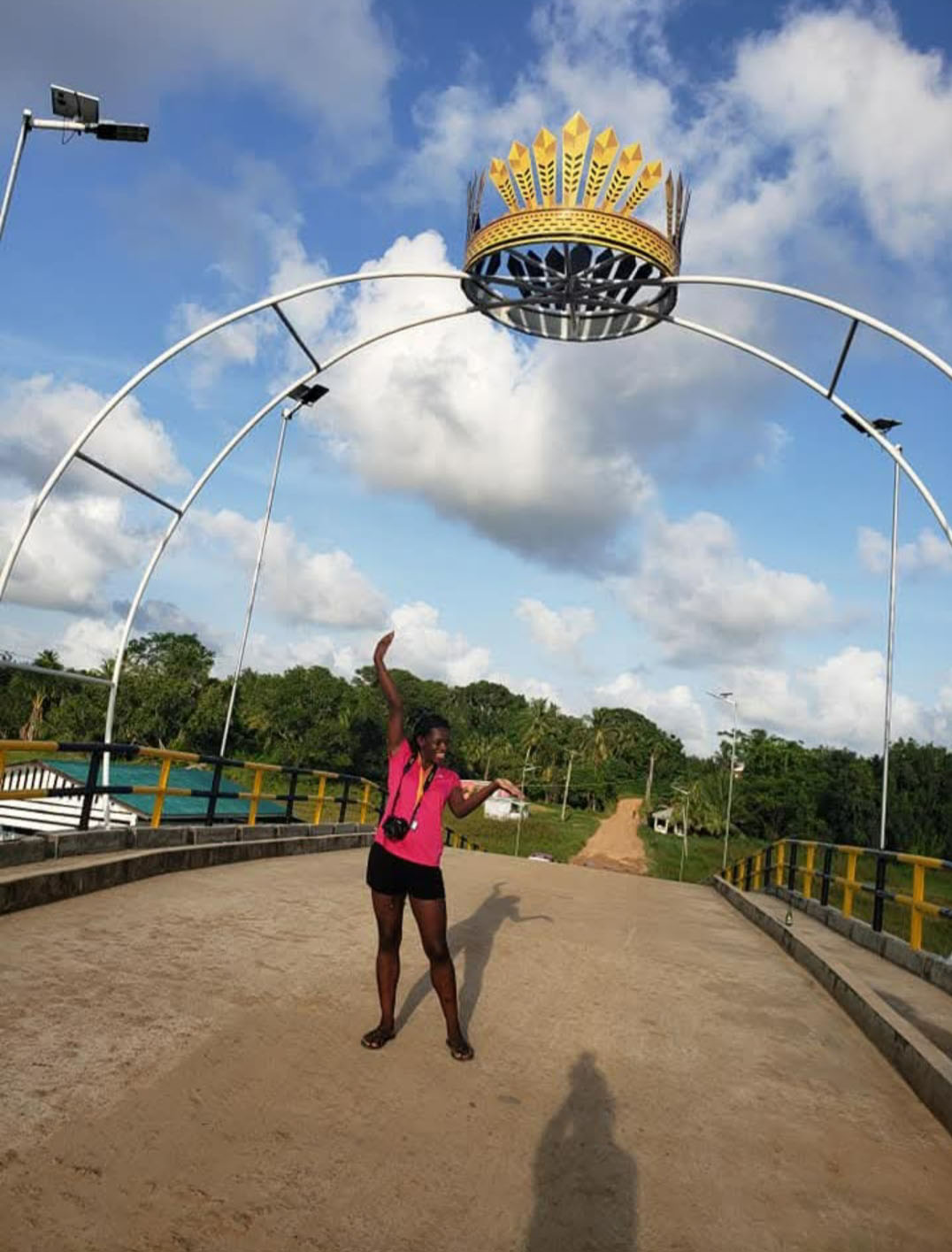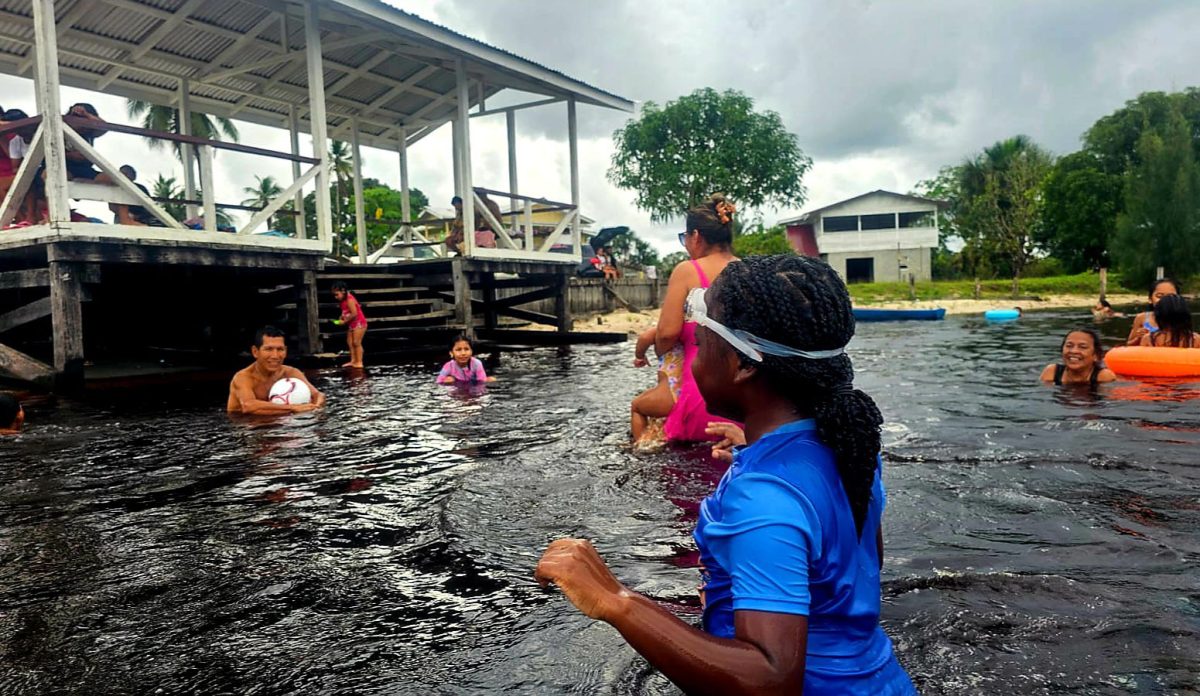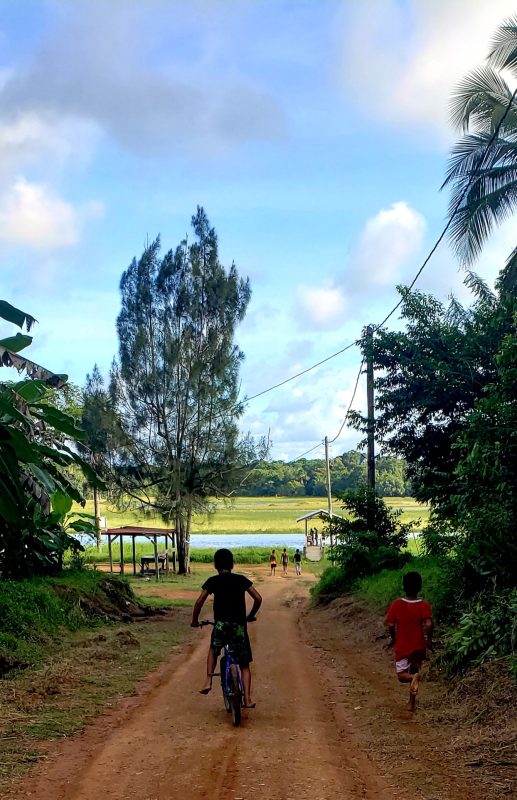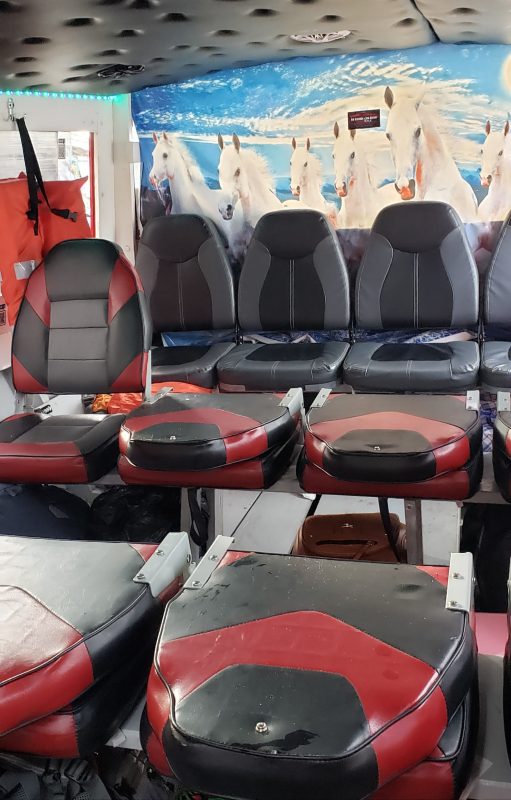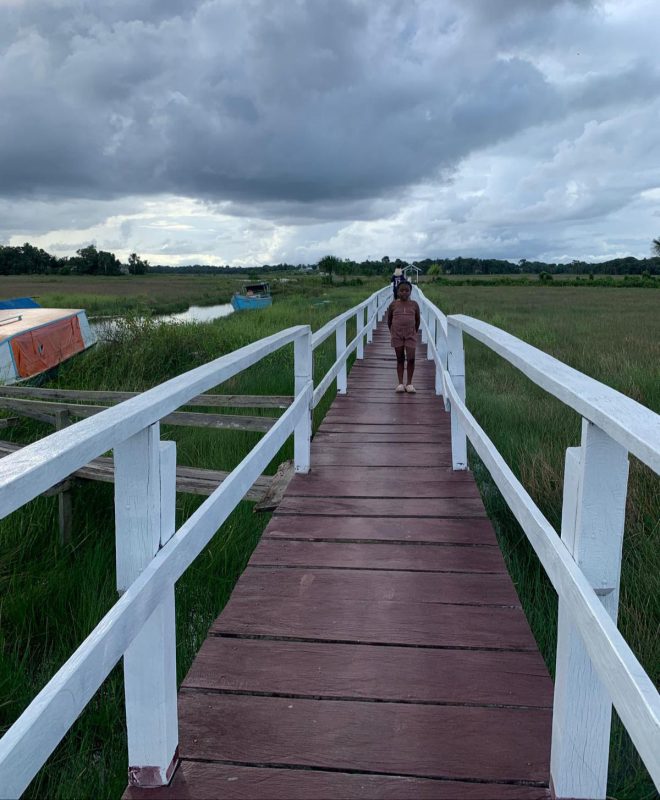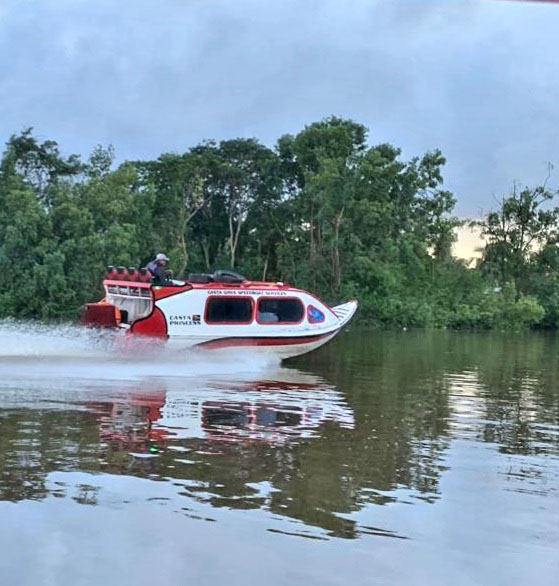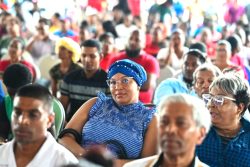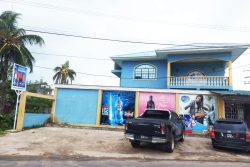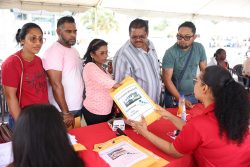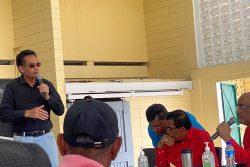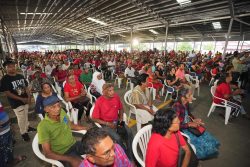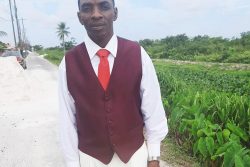This week, feature writer Miranda La Rose took a trip down memory lane, as she recaps a December visit to her hometown, Santa Rosa, and nearby communities.
Towards the end of December during the height of the Christmas festivities , I was in a reflective mood as I travelled thrice along the Essequibo Coast and in Santa Rosa Village, Moruca, twice within a two-week period.
On the two occasions I was in Santa Rosa, my hometown, my eight-year-old granddaughter accompanied me. Hedr presence brought back a lot of memories of my own maternal grand-mother, Thomasa Torres aka ‘Gramma Poto’ and how she taught me a few practical things.
One memory was walking through the Two Miles Kumaka Road shortcut with ‘Gramma Poto’ on the way to her Four Mile farm, when I developed a bad bout of hiccupping. Out of the blue, my grandmother told me in a serious voice, ‘Ah hear you tief sweetie from Co-op Shop and ah don’t like it.’ The Co-op Shop was one of two popular shops in the Cabucalli area near to where we lived at San Jose at the time. I was most astonished at the accusation and immediately denied it. I was almost in tears when my grandmother said, ‘Yuh stop hiccupping’. The hiccups had stopped.
I subsequently tried that shock strategy on my granddaughter who travelled with me and it was successful.
Kabaka
Enjoying a tented one-and-a-half hour or less speedboat ride from Kumaka, Moruca to Charity on the Pomeroon River. I reminisced on travelling this route in the 1970s on the ‘Kabaka’, a diesel-powered passenger/cargo/mail launch that took nine hours from Cabucalli Landing to Charity on the Pomeroon River.
‘Kakaka’ usually left Cabucalli Landing at 7 am and arrived at Charity about 4 pm. High school children and mainly men perched on the top of the launch throughout the trip, rarely seeking shelter under the tent. It was about 20 miles of travel through the Moruca River, across a five-mile stretch of the Atlantic into the Pomeroon River to get to Charity.
Passengers ate and drank whatever they took for sustenance on top of the launch. They even crossed the Atlantic from Moruca Mouth to Pomeroon Mouth on top of the launch only going under the tent if ‘Mr Kabaka’ told them to do so.
On arrival at Charity, they boarded a big yellow bus outfitted with wooden seats. Depending on the time the bus left Charity, it arrived at Adventure between 8 pm and 9 pm after a bumpy ride along a rough road flanked by rice fields interspersed with coconut trees and a few villages with quaint wooden houses, mostly unpainted.
Passengers would spend the night on benches at the Transport and Harbours Department (T&HD) wharf. Today, a longer journey by car from Charity to Supenaam is about 45 minutes with moderate driving.
Essequibo Coast resident and former hinterland scholarship student, Elvis Smith of St John’s Pomeroon River, recalled the never-ending journeys and becoming sick just bouncing on the road in one of those yellow buses.
He also recalled boarding the MV Malali to get to Parika and then to travel to Georgetown.
“In those days, you were lucky if the ferry did not run aground on a sandbank in the Essequibo River,” he said.
Depending on whether you were travelling from Adventure or Supenaam to get to Parika, the journey could have taken more than half a day as the ferry had to wait for the tides to rise to float off the sandbank. That no longer exists today because of new engines and better navigational systems, Smith opined.
That trip today on the ferry takes about one and half hours from Supenaam to Parika. Speedboats do the same distance between 20 to 30 minutes depending on the horsepower of the outboard engines.
Back in the 1960s and 1970s, once the ferry arrived at dawn at Parika Stelling, tickets were bought to join the train to get to Vreed-en Hoop. There again on the train were wooden benches. It was a bumpy and noisy ride as the train chugged along and stopped at various stations before getting to its destination. There was no time for the sleep-deprived traveller. to rest
At Vreed-en-Hoop tickets were bought for the ferry to Stabroek Wharf, Georgetown. All in all, travel from Moruca took a day and a half. It was a tiring, but fun-filled journey with friends who made the trip worthwhile. Many can relate anecdotes about their days of travel to and from Moruca.
My first trip to Georgetown as an 11-year-old was via Pomeroon River Mouth to Kingston wharf in a steamer. I experienced seasickness throughout that journey and never travelled via that route again. Today, that route is reserved mainly for cargo going into Pomeroon and Moruca.
Now a trip from Santa Rosa to Georgetown takes about three and a half hours by speedboats and cars and one can relax and enjoy the scenery with soft music. If we include using the T&HD ferry to Georgetown, it takes about five hours.
From the Eugene Correia International Airport, Ogle to Bemichi Airstrip, Santa Rosa, a ride in a small aircraft is about 30 to 35 minutes.
Kumaka-San Jose bridge
Many older folks remember the days when there was no bridge linking Santa Rosa Mission and Kumaka – before the mid-1970s. Almost every home had a dugout canoe and almost every child had to learn to paddle a boat and to swim. However, when boats were not available to take school children across the river from Kumaka to San Jose or back, especially during the dry season when the savannahs were dry, many swam across the river holding aloft their school uni-forms and books. Some children also swam from Huradiah to Santa Rosa Mission, during the dry season.
There were about three or four versions of the Kumaka-San Jose Bridge, which were built of wood, before the current structure. The bridge is a popular area for visitors and residents to take pictures, especially for weddings, against the greenery of the savannahs as a backdrop. It is also where many people await travellers coming in from either side of the bridge.
It is a popular liming spot.
Acquero
Acquero, so named after the palm fruit popularly called, ‘kureyo’ on coastal Guyana, was once the administrative centre of Moruca that housed the district administrative office, health centre, a dispensary, and a government rest house. It had been virtually abandoned for the busier Kumaka Landing, but is making a comeback.
Acquero Landing, where trade between the Arawaks and the Dutch took place, is still a popular place for swimming due to its sandy nature during both wet and dry seasons. During the late 1960s and early 1970s children dug up from the sand, remnants of colourful beads of different sizes, that the Dutch had traded with the Arawaks. They used them to make hand bands and necklaces. No amount of digging in the sand in the area today produces anything.
A popular swimming spot, Acquero Landing was where swimming instructor and former national swim coach Stephanie Fraser learnt to swim.
Fraser recalled the ite palm growing across the brown-coloured river from their home and using the stalk of the ite as a buoy to learn to swim. “That was how we all learnt to swim,” she said.
On Friday afternoons after school, Fraser recalled, she, her siblings and cousins sank their boats on their way home from Cabucalli to Acquero just so they could swim, and despite knowing they would be scolded or beaten for their tryst with the water.
Across the river was a clump of ite palms and a jamoon tree and children swung from the branches and plunged into the river.
Today, depending on where you live or where you stay if visiting, Acquero Landing is just a walk away, or a water taxi, or car ride away.
In the 1960s, 1970s and 1980s, there were no cars in Santa Rosa. Now at Kumaka Landing, one can easily get a drop up the road, or down the road, or to any part of the village including as far as Kamwatta and Cart Market or further afield to neighbouring villages like Waramuri and Kwebanna on the Waini River.
Of course, there is the versatile water taxi that flits about from one area to another on the river.
Emerging are boardwalks being built in several areas including one at Coco. These boardwalks, which give people good views of the savannahs and surrounding areas, are very utility oriented as they enable residents to walk to the river side to catch a water taxi to go about their business. They are also useful during the dry season when the trenches dry up and boats cannot moor inland.
Santa Rosa, the largest Indigenous People’s community in Guyana with a population of over 12,000, has undergone many changes from the early 1960s to now with much of the customs under threat of being lost.
Years gone by every home had a thatched roof, now every home boasts a galvanised or zinc sheet roof with modern conveniences.
Gone are the days when almost every home had a designated hut with a fireside where daily cooking, baking cassava bread and making cassareep were made. In that area too the cassava root was scraped, grated and strained in the matapee to make the cassava ‘meal’ from which the cassava bread is made, and from which the cassava water is extracted to make the cassava sauce popularly known in Santa Rosa as ‘kadakura’ or tuma in other areas of Guyana. Those customs are rapidly becoming extinct in Santa Rosa.
With some nostalgia and a fear of what is being lost, I recalled being asked at school in Georgetown in the early 1970s if the people in Moruca wore loincloths, beads and feathers and promptly replying positively. However, when the questioner visited Moruca in the mid 1970s he was most surprised and disappointed to find the locals dressed like people living on the coastland.
